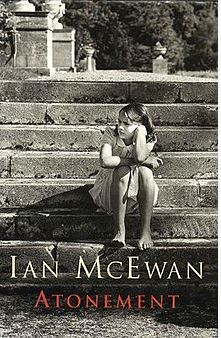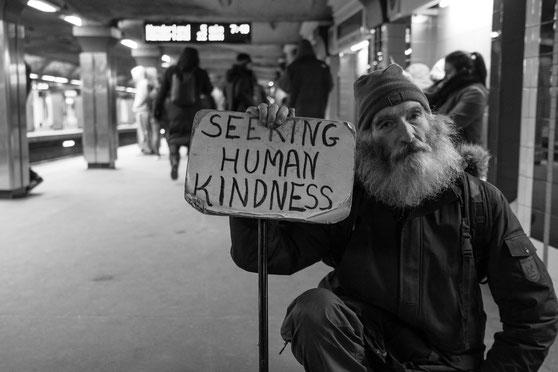A List Of The 10 Best Fiction Books Of All Time! Do you love fiction? See what my favourite books are! blog | top 10 list | books | fiction Here's a list of my 10 favourite fiction books....
<?xml version="1.0"?>A List Of The 10 Best Fiction Books Of All Time!
Do you love fiction? See what my favourite books are!
blog | top 10 list | books | fiction

Here's a list of my 10 favourite fiction books. They're not in any particular order. Why are they my favourites? They're all books that have changed the way I look at the world and left me with a feeling I can't shake - which is the point of all good books!

Mrs Dalloway | Virginia Woolf
First Published 1925
The whole book takes place in just one day. Clarissa Dalloway is hosting a dinner party that evening, and the book follows her as she prepares for the party, starting, rather famously, with her going to collect the flowers. The book moves back and forth in time, as she reminisces about her time as a young woman. Has she made the right choice in her husband? The reliable Richard Dalloway, instead of the charming and enigmatic Peter Walsh; or the one who really got away, Sally Seton. The parallel story of Septimus Smith, a war veteran who took his own life while Clarissa was out running errands, is discussed later that evening at the dinner party. Clarissa admires his choice, which she sees as a way of preserving happiness.
It's hard to say exactly what it is that I love about this book. The cleverness and novelty of the form and the fact that there is a female love interest are just a couple of the things. As a feminist, it's impossible not to be a fan of Virginia Woolf, and I think this is an example of a perfect novel.

The Great Gatsby | F. Scott Fitzgerald
First Published 1925
Nick Carraway's first-person narration tells the story of the mysterious Jay Gatsby. Nick rents a small house in West Egg, a village on Long Island. His neighbour is Gatsby, the enigmatic millionaire who frequently throws lavish parties on his sprawling estate. Across the bay in East Egg live Daisy Buchanan and her husband Tom. Daisy happens to be Nick's cousin, and she also happens to be Gatsby's long-lost love from before he went off to fight in the war. Gatsby deliberately bought the house opposite Daisy's in an attempt to get closer to her and in the hope of rekindling their love. Through Nick, Daisy and Gatsby are finally reunited and begin their affair again. Tom, who has also been having an affair with a poor woman called Myrtle, discovers Daisy and Gatsby's relationship and the two men argue. Daisy admits that she loves both men but ultimately decides to stay with Tom. Gatsby drives Daisy home from the hotel where the encounter with Tom has just taken place and on the way home they accidentally hit and kill Myrtle. Myrtle's husband decides that the driver of the car must be Myrtle's lover and goes to Gatsby's house and shoots him. The twist is that Daisy was driving the car and Gatsby was covering up for her. Nick becomes disillusioned with Daisy and Tom's circle and decides that they're all "rotten", and vows to leave New York after Gatsby's funeral.
Like Mrs Dalloway, this is a book about issues of class and conscience. Integrity and the assumptions we make about those with money and influence are often not correct. Gatsby, despite being a bootlegger and a swindler, is still more honest than Daisy and Tom. A book so much of the time it was written - an absolute classic!

To Kill A Mockingbird | Harper Lee
First Published 1960
Six-year-old Scout narrates the story, which is set during the Great Depression in the fictional town of Maycomb, Alabama. She lives with her brother, Jem and her father, Atticus Finch. Her friend, Dill, comes to the town every summer to stay with his aunt. The three children are equally fascinated and terrified by their neighbour, Boo Radley and plot ways to get him out of his house.
Scout and Jem's father, Atticus, is a lawyer who is hired to defend Tom Robinson, a black man who has been accused of raping a young white woman. Atticus reveals that the woman and her husband, Bob, are lying, but Tom is convicted anyway and is shot while trying to escape from prison. Bob threatens Atticus and the children, and Jem breaks his arm as a result and is rescued by the mysterious Boo Radley.
A story about segregation in the Deep South, based on some true elements from Harper Lee's real-life. The beauty of this book is that it is told through the innocent eyes of a child. Racism and the hatred that goes with it can only have been invented up by adults, because children simply don't understand it - because it makes no sense!

Alone in Berlin | Hans Fallada
First Published 1947
The original German title of this book is Jeder stirbt für sich allein (Everyone dies alone). Otto and Elise Hampel are a working-class couple living in Berlin, uninterested in politics, until their only son is killed in action in France. They begin a campaign of civil disobedience, distributing postcards around Berlin urging the German people to open their eyes and realise that the Nazis would never bring peace. The couple are eventually arrested, imprisoned and executed by the Gestapo.
The book was first published in English in 2009 and became an instant bestseller. Fallada wrote the book in 3 months in 1946 after being given access to the Gestapo files on the real-life Hampel's. It's a book that raises difficult questions about morality and the loneliness of choice, especially under totalitarianism. What would we, the reader, do in such circumstances? Fallada, cleverly and subtly points out how easily a whole nation can be corrupted by terror.
Fallada died only a few months after completing this novel, having suffered for years from various forms of addiction. A man who knew true loneliness and understood the complexity of the effects our choices can have. A sad, but always relevant book.

Half Of A Yellow Sun | Chimamanda Ngozi Adichie
First Published 2006
The Nigerian Civil War of 1967-70, which took place when Biafra declared its secession, is the setting for this novel. The effects of the war are shown through the lives of the five main characters. The main characters are introduced to us in the early 60s. Ugwu is the houseboy of Olanna and Odenigbo. Both intellectuals and academics, they host frquest parties to discuss the state of Nigeria. Olanna's twin sister, Kainene and her English lover, Richard, are the other two characters who show us how the war has changed the country and its people.
Trouble starts brewing between the Igbo and Hausa people, and massacres lead to the deaths of hundreds of citizens, including Olanna & Kainene's aunt and uncle. The Igbo people create a new republic in Biafra and Olanna and Odenigbo have to flee the university town of Nsukka, and end up in a refugee town where they have to live with Richard and Kainebe. Kainebe runs a refugee camp and, faced with an extreme shortage of food, decides to trade across enemy lines. She never returns and the novel ends ambiguously.
This is the book that really cemented my love for Adichie. The characters are so rounded, that you care about each and every one of them, even if you don't always like them. That is Adichie's gift - nuance and the truth of what it means to be human. Not only is this a story about people, it's a story about a real war that claimed the lives of up to 2 million Biafrans through starvation and fighting. It is a book about class, race, love and the end of colonialism.

Atonement | Ian McEwan
First Published 2001
A story in four parts. The first part is set in 1935. The Tallis' country estate is full of family and friends visiting for the summer. The son of the family's housekeeper, Robbie, has also returned, after completing his university education, funded by the Tallis family patriarch. A series of events, witnessed by the youngest Tallis child, Briony, leads to a massive misunderstanding after Robbie asks her to deliver a letter to Cecilia. This leads to Robbie being falsely accused of rape and he is arrested and taken away.
The second part takes place in Dunkirk during the Second World War, where Robbie is fighting following his release from prison. He and Cecilia have kept in touch, maintaining their love through letters, and before he leaves for France, the couple meet briefly and share a final kiss. Robbie goes to France and is injured.
Part three of the novel takes place at the same time as part two, but is told from Briony's point-of-view. She is eighteen-years-old and is training to be a nurse, having given up her place at Cambridge. She has fully realised the extent and implications of her mistake and promises to get Robbie completely exonerated.
The final part of the novel takes place in 1999 and is again narrated by Briony, who is now 77 years old. She attends a party at her old family home and reveals that the previous two parts of the novel were fiction. Robbie and Cecilia never met up again after he was sent to prison. He died of septicaemia on the beaches of Dunkirk and Cecilia was killed in a bomb blast at Balham Underground station during the Blitz. She wrote the last part as her way of atoning for what she did to them all of those years ago.
I have been a fan of Ian McEwan since I was at school and I read The Comfort of Strangers. Atonement is one of those books that you really, really don't want to end; you're so invested in the characters and their story, that when you turn the last page, it's so easy to just turn back and start all over again. It's one of those rare, near-perfect novels that is timeless.

The Handmaid's Tale | Margaret Atwood
First Published 1985
The Republic of Gilead takes over the United States of America following an assassination attempt on the President. The new regime organises the society according to a peculiar interpretation of the Old Testament. Women are relegated to the lowest class and are not allowed to earn money or own property. They are also forbidden to read and write, but most importantly, they are no longer allowed to control their reproductive functions.
The story is told in the first-person by a woman called Offred. She is one of the few remaining fertile women in Gilead and is forced to bear children for the Commanders: the ruling class. The women are forced to follow a very strict dress code. The story jumps back and forth between her time before Gilead, with her husband and child, and her failed attempt to escape to Canada, and her time in training to become a "Handmaid".
Offred's Commander breaks the rules and asks to see her in his study before the "Ceremony". They play Scrabble and talk and he takes her to a club called Jezebel's where she meets her old friend Moira, who has escaped from the indoctrination facility. The Commander's wife begins to believe that her husband is sterile, so she arranges a liasion between Offred and Nick, the Commander's personal servant. The two discover that they enjoy spending time together and she shares potentially dangerous information about her past with Nick. It is not clear whether NIck is a member of the Mayday Resistance movement or an Eye, Gilead's secret police force.
At the end of the book, Offred is taken away by a group of men who look like the Eyes, and is told by Nick to trust them. It is not clear whether these men are Eyes or members of the Mayday resistance. We jump to 2195, and a narrator is talking about Offred's account, which has been transcribed onto cassettes and is a historical account of "The Gilead Period".
Looking at the world today, reading the news, seeing Roe v Wade overturned, watching the Taliban take away women's rights in Afghanistan, it's hard not to be depressed and horrified when you read this book; but read it you must. A novel that takes events that have ACTUALLY happened in human history, fictionalises them and puts them all in one place. It's not impossible that this could happen to us. So read this book, make yourself aware that freedom is something we may all have to fight for one day.

Matilda | Roald Dahl
First Published 1988
Matilda's parents, Mr & Mrs Wormwood, refuse to acknowledge their daughter's genius. Matilda loves to read and devours book after book from the local library. When Matilda starts school at the age of 5, she is befriended by her teacher, Miss Honey, who is overwhelmed by Matilda's abilities.
Miss Trunchbull is the headmistress of the school and imposes extreme punishments on any child who misbehaves, even throwing one girl by her ponytail over the school fence. Miss Honey confides in Matilda that she was raised by her abusive aunt, after her father died in mysterious circumstances: Miss Trunchbull. Miss Trunchbull has withheld Miss Honey's inheritance, leaving Miss Honey to live in poverty in an old, dilapidated farmhouse.
Matilda discovers that she has the gift of telekenesis and one day uses it against Miss Trunchbull. She practices her telekenesis at home and one day in class, she uses her ability to control a piece of chalk and write on the blackboard, pretending to be the ghost of her dead brother Magnus. Miss Trunchbull faints and eventually disappears, never to be seen again. Miss Honey gets her inheritance and a new house and Matilda eventually goes to live with her after her parents have to make a hasty exit because of some stolen cars that Mr Wormwood has been selling.
Roald Dahl is the author who ignited my love of books and reading, and Matilda is one of the first books I remember finishing and loving. Like all good children's books, it's dark and funny, and is great to read as an adult too.

The Wasp Factory | Iain Banks
First Published 1984
Frank lives with his father on a small island in Scotland. He has no contact with his mother and his older brother, Eric, is in a psychiatric institution. Frank spends his time with maintaining his set of rituals, building dams and weapons that uses to kill small animals on the island. He takes long walks, patrols the island and gets drunk with his only friend. Frank has virtually no contact with the outside world and is haunted by the memory of a dog attack in his youth which resulted in the loss of his genitals.
The Wasp Factory of the title is a giant clock face in a glass box, and behind each of the numbers is a trap that leads to a ritual death for the wasps that Frank puts inside. He believes that the chosen death predicts some future event. It is slowly revealed that Frank killed three of his relatives when he was much younger, and the reason for Eric's hospitalisation is a horrific story involving a baby and maggots.
Frank longs to get into his father's study which is kept locked at all times. Eric returns to the island and goes on a rampage, setting things on fire and causing their father to get drunk and forget to hide the keys to his study. Frank gets in and finds a jar of preserved genitals. Then the big twist is revealed!
A truly incredible debut novel, short, but with so many original ideas that you'll never be able to forget it!

The Berlin Novels | Christopher Isherwood
First published 1945
The Berlin Novels is an anthology that consists of two novels: Mr Norris Changes Trains (1935) and Goodbye To Berlin (1939). Both novels are set in Berlin during the Weimar Republic, just before Hitler came to power. Isherwood describes Berlin as a place of hedonism with a population completely unaware of what awaits them around the corner.
In Mr Norris Changes Trains, William Bradshaw meets a man called Arthur Norris on a train between the Netherlands and Germany. They strike up a conversation and Norris invites Bradshaw to dinner when they reach Berlin. The two men become friends and often meet in Berlin.
Over time, Norris reveals himself to be a masochist and a communist - a very dangerous thing to be at that time in history. Due to business circumstances with his partner, Norris has to flee Berlin, but returns later in the novel, where it is later revealed that he is spying for the French. Bradshaw persuades Norris to leave Berlin, and he himself returns to England.
In Goodbye To Berlin, an English writer has moved to Berlin to work on his novel and enjoy the city's notorious nightlife. He finds a room with Fräulein Schroeder, where he meets Sally Bowles, a cabaret singer. The writer and Sally soon become roommates and she tells him all about her affairs and lovers.
The rise of fascism is always in the background of the novel, and eventually, the writer moves back to England after the rise of Nazism becomes too much. He fears that many of his friends and acquaintances are dead.
The novels, which inspired the film and stage musical, Cabaret, were introduced to me by a drama teacher at school and led to me becoming a real Germaphile (is that a word?!) and eventually moving to Berlin. Isherwood apparently said many years later that he regretted not taking the feelings of Berliners more seriously, but I think that's what makes the book all the more interesting. It's a snapshot of a time, told from an outsider's point-of-view, during an extraordinarily brutal period in European history. Berlin went from being a loose and carefree city of sex and parties, to the HQ for organising of the horrors of the Holocaust and much more. It's a book that shows how easy it is to slide from one side to the other.















